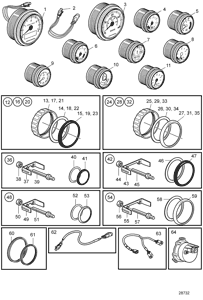
Capacitive Power Factor remedy is applied to circuits that incorporate enlistment engines as a method for diminishing the inductive segment of the current and along these lines decrease the misfortunes in the supply. There ought to be no impact on the activity of the engine itself. Power factor amendment is accomplished by the expansion of capacitors in corresponding with the associated engine circuits and can be applied at the starter, or applied at the switchboard or conveyance board. Materials in electrical wholesalers stockport very good. The subsequent capacitive current is the driving current and is utilized to drop the slacking inductive current moving from the stockpile.
.png)
Techniques for Power Factor Correction
Capacitors associated at every starter and constrained by every starter are known as “Static Power Factor Correction” while capacitors associated at a dispersion board and controlled freely from the individual starters are known as “Mass Correction”. The Power factor of the absolute current provided to the dissemination board is observed by a regulator which at that point switches capacitor banks In a style to keep a force factor better than a preset cutoff. (Normally 0.95) Preferably, the force factor ought to be as near solidarity (Power factor of “1”) as could be expected. There is no issue with mass remedy working at unity.As a huge extent of the inductive or slacking current on the stockpile is because of the polarizing current of acceptance engines, it is not difficult to address every individual engine by associating the revision capacitors to the engine starters. With the static amendment, it is significant that the capacitive current is not exactly the inductive polarizing current of the acceptance engine. In numerous establishments utilizing static force factor remedy, the amendment capacitors are associated straightforwardly in corresponding with the engine windings. At the point when the engine is disconnected, the capacitors are likewise disconnected. At the point when the engine is associated with the inventory, the capacitors are likewise associated giving adjustment consistently that the engine is associated with the stock. This eliminates the prerequisite for any costly force factor observing and control hardware. In the present circumstance, the capacitors stay associated with the engine terminals as the engine eases back down.
An enlistment engine
While here associated with the inventory, is driven by a turning attractive field in the stator which prompts current into the rotor. At the point when the engine is disengaged from the stock, there is for a while, an attractive field related to the rotor. As the engine decelerates, it produces voltage out its terminals at a recurrence which is identified with its speed. The capacitors associated across the engine terminals, structure a resounding circuit with the engine inductance. On the off chance that the engine is fundamentally remedied, (revised to a force factor of 1.0) the inductive reactance rises to the capacitive reactance at the line recurrence, and accordingly, the thunderous recurrence is equivalent to the line recurrence. If the engine is over remedied, the full recurrence will be beneath the line recurrence. If the recurrence of the voltage created by the decelerating engine passes through the full recurrence of the adjusted engine, there will be high flows and voltages around the engine/capacitor circuit. This can result in cut off harm to the capacitors and engine. Engines are never over amended or rectified when static adjustment is employed. Static power factor remedy ought to give capacitive current equivalent to 80% of the polarizing current, which is the open shaft current of the engine. The charging current for enlistment engines can differ impressively. Regularly, polarizing flows for huge two post machines can be just about as low as 20% of the evaluated current of the engine while more modest low-speed engines can have a charging current as high as 60% of the appraised full burden current of the engine.
